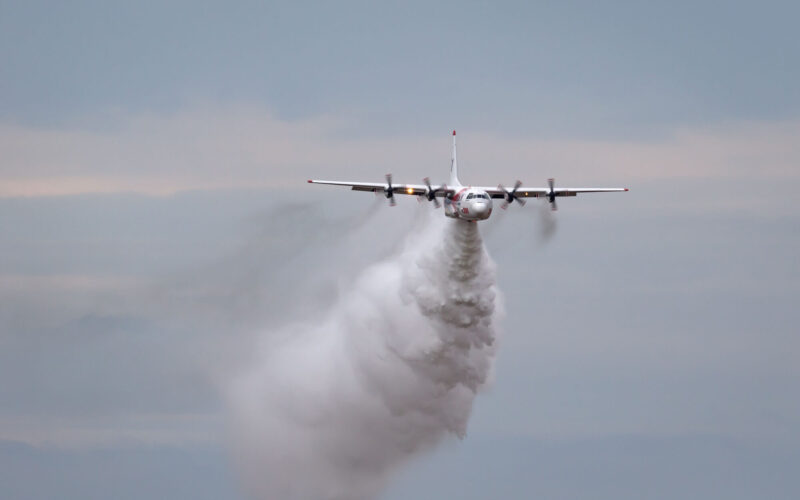A Lockheed C-130 large air tanker that crashed while fighting bushfires in Australia in 2020 likely stalled when flying in hazardous conditions that prompted other aircraft to return to base, an investigation has found.
All three crew members aboard the tanker, registered N134CG, were killed when the aircraft hit rising terrain while trying to climb away after dropping retardant in the Snowy Mountains in New South Wales on January 23, 2020.
The Australian Transport Safety Bureau (ATSB) found in its report that the “forecast and actual weather conditions present in the Snowy Mountains region were hazardous, with strong gusting winds and mountain wave activity, producing turbulence.” The conditions were likely made worse by the fire and local terrain, the ATSB noted.
The aircraft was seen at a low height above the ground and in a slight left bank, before entering a significant left roll and impacting the ground. The investigators said they believe the conditions were conducive to windshear and downdraft, which can be extremely dangerous for aircraft, especially when traveling slowly and at low altitude.
What information did the crew have?
The report said the pilot was not given all the necessary information to make an informed decision on flight safety. The NSW Rural Fire Service (RFS) continued to task the C-130 with a mission to Adaminaby, despite being aware of the conditions and knowing that other fire control aircraft were not operating in the area due to the conditions.
“All smaller fire-control aircraft had ceased flying, a ‘birddog’ lead aircraft initially assigned to support the 737 and C-130 had declined the tasking, and the 737 was returning to Richmond, having declined further tasking to Adaminaby,” the ATSB said. “This information was not communicated by the RFS to the C-130’s crew.”
After arriving and assessing the conditions as unsuitable at Adaminaby, the crew of N134CG accepted an alternative tasking to continue to the Good Good fire-ground, which had the same weather conditions.
“Shortly after conducting a partial drop at Peak View, the aircraft commenced a climbing left turn. Following this, climb performance degraded and while at a low height and airspeed, it was likely the aircraft aerodynamically stalled, resulting in the collision with the ground,” the report states.
The C-130 was operated by Coulson Aviation under contract to the New South Wales Rural Fire Service (RFS) and the ATSB made safety recommendations to both, highlighting the need for continuous risk mitigation in such demanding missions.
“The ATSB recognises the critical importance of aerial firefighting, where aircraft are flown at low altitudes and low airspeeds, often in challenging conditions, in the management and suppression of bushfires in Australia,” said Chief Commissioner Angus Mitchell.
“These operations necessarily take place in a high-risk environment, which requires a continued focus on risk mitigation, a responsibility that, in the Australian operating context, is shared between the tasking agency and the aircraft operator.”

